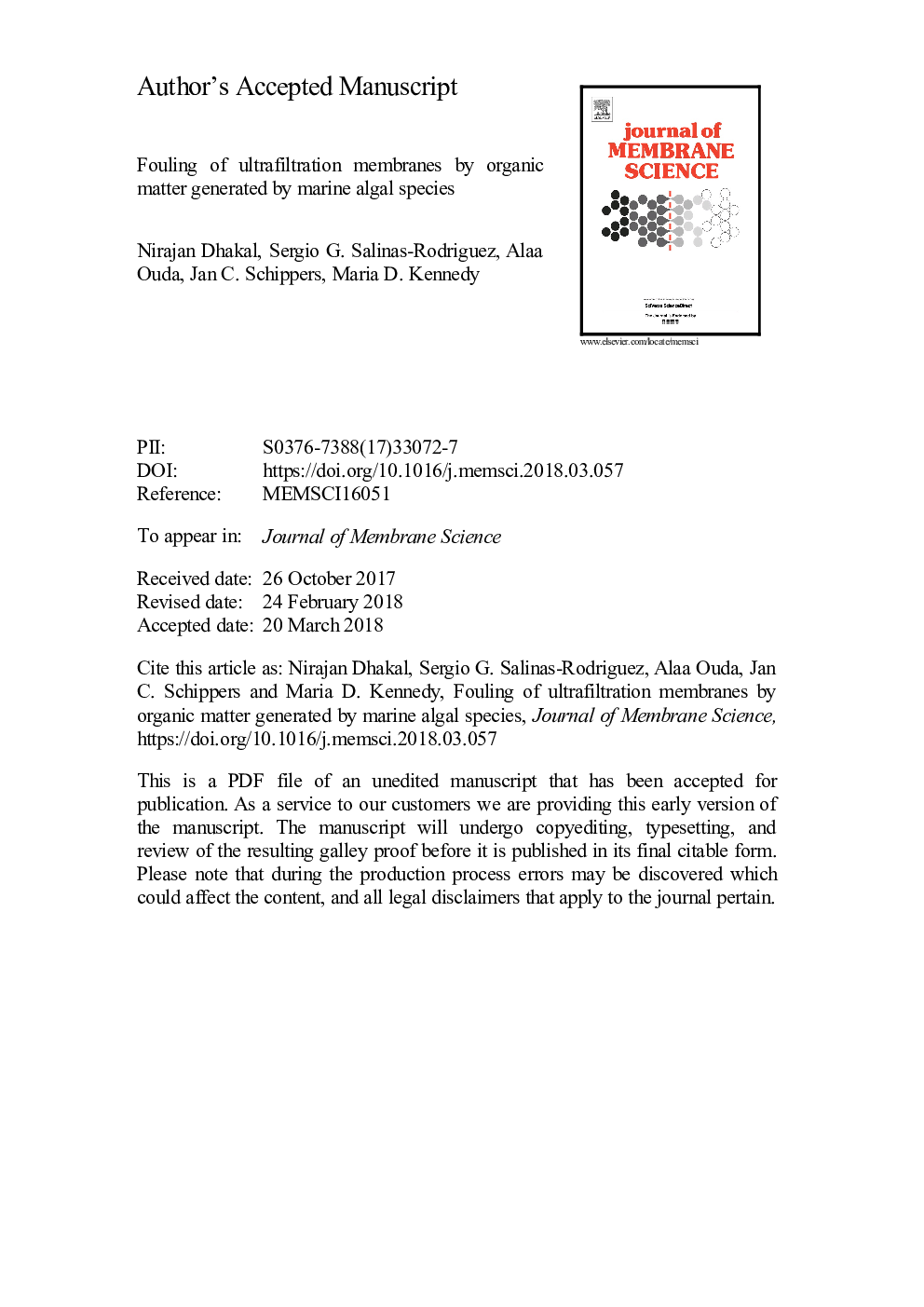| Article ID | Journal | Published Year | Pages | File Type |
|---|---|---|---|---|
| 7019935 | Journal of Membrane Science | 2018 | 35 Pages |
Abstract
Controlling fouling in seawater reverse osmosis and ultrafiltration systems is a major challenge during algal blooms. This study investigates UF fouling potential of four marine algae and their algal organic matter (AOM): Chaetoceros affinis (Ch), Rhodomonas balthica (Rh), Tetraselmis suecica (Te), and Phaeocystis globulosa (Ph). Batch culture monitoring of the four different marine algal species showed remarkable differences in their production of biopolymers, transparent exopolymer particles (TEP) and their membrane fouling potential (MFI-UF10â¯kDa). MFI-UF10â¯kDa was linearly related to biopolymer concentration, and TEP during the growth and stationary/death phase of all four algal species. But the linear relation of MFI-UF10â¯kDa with algal cell density and chlorophyll-a concentration did not continue during the stationary/death phase. In experiments with capillary UF membranes, non-backwashable fouling of UF membranes varied strongly for the four different AOM solutions tested, and was linked to the presence of polysaccharides (stretching-OH) and sugar ester (stretching SËO) groups in the AOM. The non-backwashable fouling coincided with MFI-UF150â¯kDa and TEP concentration. Therefore, determination of these parameters (MFI and TEP) and correlating with MODIS satellite data may generate useful information about the fouling potential of seawater at different locations during an algal bloom.
Keywords
MFI-UFPolyethersulphoneSWROCEBFBWCCAPTEPSDILC-OCDDAFAOMTMPPESFEEMTOCTDSDOCATRCCYTetraselmis suecicaalcian blueEDTAEthylenediaminetetraacetic acidReverse OsmosisSeawater reverse osmosisUltrafiltrationAttenuated total reflectionMarine algaeTransparent exopolymer particlesBiopolymersSilt Density IndexFTIRFourier transform infrared spectroscopyTransmembrane pressuredissolved air flotationAlgal organic matterTotal dissolved solidsDissolved organic carbonTotal organic carbon
Related Topics
Physical Sciences and Engineering
Chemical Engineering
Filtration and Separation
Authors
Nirajan Dhakal, Sergio G. Salinas-Rodriguez, Alaa Ouda, Jan C. Schippers, Maria D. Kennedy,
